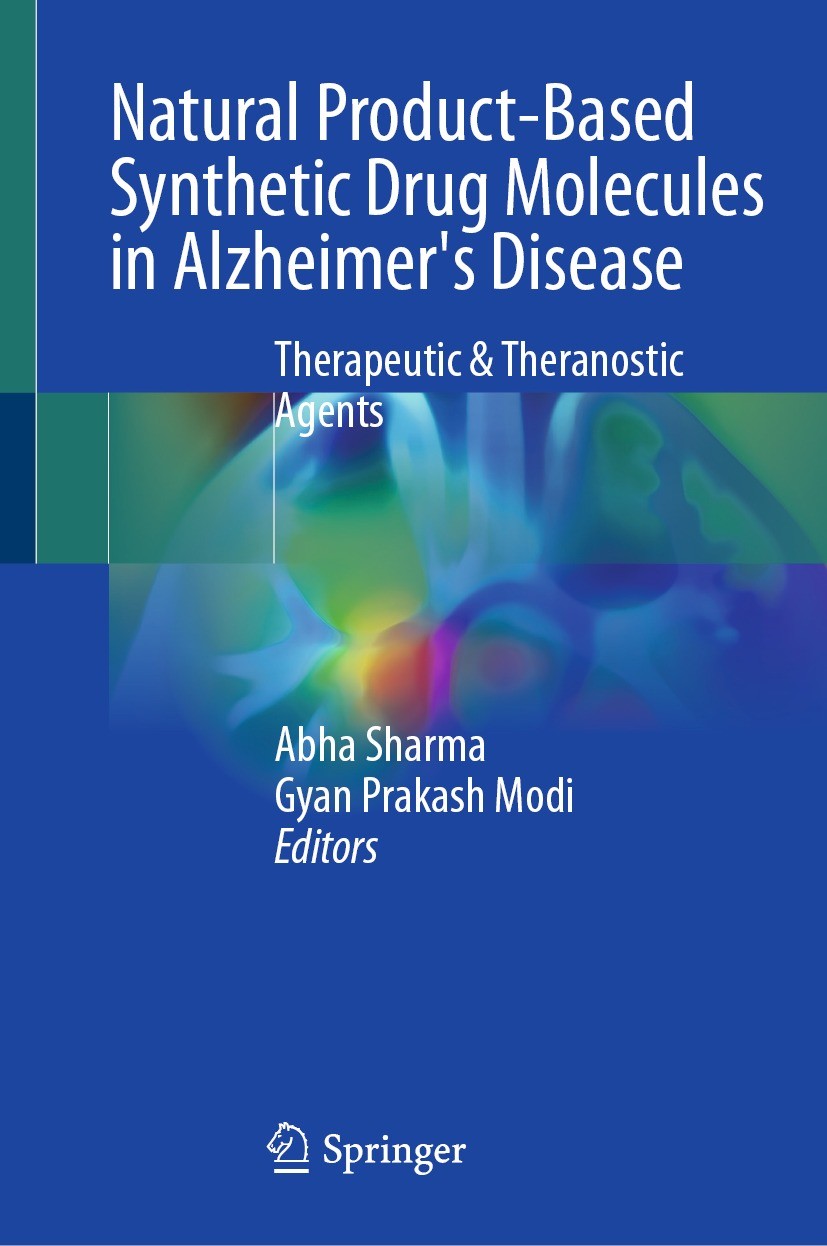| 书目名称 | Natural Product-based Synthetic Drug Molecules in Alzheimer‘s Disease |
| 副标题 | Therapeutic & Theran |
| 编辑 | Abha Sharma,Gyan Prakash Modi |
| 视频video | http://file.papertrans.cn/662/661888/661888.mp4 |
| 概述 | Examines natural products as source of novel drug against Alzheimer’s disease.Covers the role of metal homeostasis and oxidative stress in the pathogenesis of Alzheimer’s disease.Discusses the role of |
| 图书封面 |  |
| 描述 | This book illustrates the importance of natural products as the source for the development of novel drugs for the treatment of neurodegenerative disorders, including Alzheimer‘s disease. It also highlights the role of reactive oxygen species and altered metal homeostasis in the progression of Alzheimer’s disease and examines the potential of antioxidants and anti-chelating agents in the clinical intervention of neurodegenerative diseases. The book also discusses the role of neuroinflammation in the pathogenesis of Alzheimer’s disease. The chapters provide information about the drug targets, progress in the development of natural product-based therapeutics, biomarkers, fluorescent diagnostic tools, and theranostic for Alzheimer‘s disease. The book also provides information about the design and synthesis of natural product-based derivatives against the various targets of Alzheimer‘s disease including epigenetic targets and the metal dyshomeostasis hypothesis. Cutting across different disciplines, this book is a valuable source for neuroscientists, chemical biologists, pharmaceutical researchers, and synthetic biologists.. |
| 出版日期 | Book 2023 |
| 关键词 | Alzheimer’s disease; Antioxidant; Natural molecules; Biomarkers; Multi-target ligand |
| 版次 | 1 |
| doi | https://doi.org/10.1007/978-981-99-6038-5 |
| isbn_softcover | 978-981-99-6040-8 |
| isbn_ebook | 978-981-99-6038-5 |
| copyright | The Editor(s) (if applicable) and The Author(s), under exclusive license to Springer Nature Singapor |
 |Archiver|手机版|小黑屋|
派博传思国际
( 京公网安备110108008328)
GMT+8, 2025-12-31 20:24
|Archiver|手机版|小黑屋|
派博传思国际
( 京公网安备110108008328)
GMT+8, 2025-12-31 20:24


